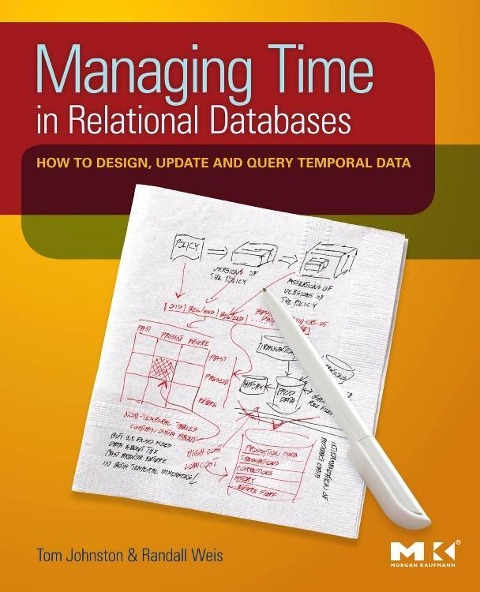
Zustellung: Mi, 28.05. - Mo, 02.06.
Versand in 1-2 Wochen
VersandkostenfreiBestellen & in Filiale abholen:
Managing Time in Relational Databases: How to Design, Update and Query Temporal Data introduces basic concepts that will enable businesses to develop their own framework for managing temporal data. It discusses the management of uni-temporal and bi-temporal data in relational databases, so that they can be seamlessly accessed together with current data; the encapsulation of temporal data structures and processes; ways to implement temporal data management as an enterprise solution; and the internalization of pipeline datasets.
The book is organized into three parts. Part 1 traces the history of temporal data management and presents a taxonomy of bi-temporal data management methods. Part 2 provides an introduction to Asserted Versioning, covering the origins of Asserted Versioning; core concepts of Asserted Versioning; the schema common to all asserted version tables, as well as the various diagrams and notations used in the rest of the book; and how the basic scenario works when the target of that activity is an asserted version table. Part 3 deals with designing, maintaining, and querying asserted version databases. It discusses the design of Asserted Versioning databases; temporal transactions; deferred assertions and other pipeline datasets; Allen relationships; and optimizing Asserted Versioning databases.
- Integrates an enterprise-wide viewpoint with a strong conceptual model of temporal data management allowing for realistic implementation of database application development.
- Provides a true practical guide to the different possible methods of time-oriented databases with techniques of using existing funtionality to solve real world problems within an enterprise data architecture environment.
- Written by IT professionals for IT professionals, this book employs a heavily example-driven approach which reinforces learning by showing the results of puting the techniques discussed into practice.
Inhaltsverzeichnis
Part 1. An Introduction to Temporal Data Management Chapter 1. A Brief History of Temporal Data Management Chapter 2. A Taxonomy of Bi-Temporal Data Management Methods Part 2. An Introduction to Asserted Versioning Chapter 3. The Origins of Asserted Versioning: Computer Science Research Chapter 4. The Origins of Asserted Versioning: IT Best Practices Chapter 5. The Core Concepts of Asserted Versioning Chapter 6. Diagrams and Other Notations Chapter 7. The Basic Scenario Part 3. Designing, Maintaining and Querying Asserted Version Databases Chapter 8. Designing and Generating Asserted Versioning Databases Chapter 9. An Introduction to Temporal Transactions Chapter 10. Temporal Transactions on Single Tables Chapter 11. Temporal Transactions on Multiple Tables Chapter 12. Deferred Assertions and Other Pipeline Datasets Chapter 13. Re-Presenting Internalized Pipeline Datasets Chapter 14. Allen Relationship and Other Queries Chapter 15. Optimizing Asserted Versioning Databases Chapter 16. Conclusion Appendix: Bibliographical Essay
Produktdetails
Erscheinungsdatum
14. September 2010
Sprache
englisch
Seitenanzahl
512
Autor/Autorin
Tom Johnston, Randall Weis
Verlag/Hersteller
Produktart
gebunden
Gewicht
1169 g
Größe (L/B/H)
26/191/235 mm
ISBN
9780123750419
Entdecken Sie mehr
Pressestimmen
"You cannot escape temporal data. You need to get over it, sit down and read what Tom and Randy are telling you in this book. "--Joe Celko, Independent Consultant & Columnist for Intelligent Enterprise, USA
"The authors present an original and comprehensive conceptual approach called Asserted Versioning, which includes support for bi-temporality and is a significant advance in the theory and practice of managing time-varying data."--Richard Snodgrass, Professor of Computer Science at the University of Arizona
"Information technology consultants Johnston and Weis explain how to integrate time into a business data system, so that the past, present, and projected future of things can be accessed easily and quickly. Tables that show time are versioned tables, and they show how using them lowers the cost and increases the value of temporal data, data that shows change through time. They introduce temporal data management and asserted versioning, then look at designing, maintaining, and querying asserted version databases."--SciTech Book News
Bewertungen
0 Bewertungen
Es wurden noch keine Bewertungen abgegeben. Schreiben Sie die erste Bewertung zu "Managing Time in Relational Databases" und helfen Sie damit anderen bei der Kaufentscheidung.










